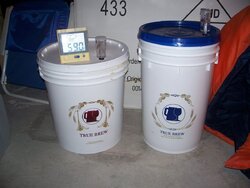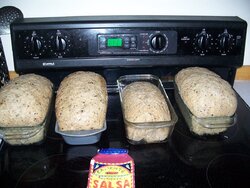Wasn't sure if this would be better of here or in the picture forum, but I figured there would be some home brewers out there.
Last week made 2 batches of brew, one on the left is a Country Ale that should work out to 7.5 ABV, and his buddy on the right is a nice porter that should be about 5% ABV.
Bottling should commence in a week, and then should be ready for Xmas.
Last week made 2 batches of brew, one on the left is a Country Ale that should work out to 7.5 ABV, and his buddy on the right is a nice porter that should be about 5% ABV.
Bottling should commence in a week, and then should be ready for Xmas.





 Think it was due to the fact that I was towards the bottom of the batch when bottling, and perhaps more sugar was in the last few bottles)
Think it was due to the fact that I was towards the bottom of the batch when bottling, and perhaps more sugar was in the last few bottles)